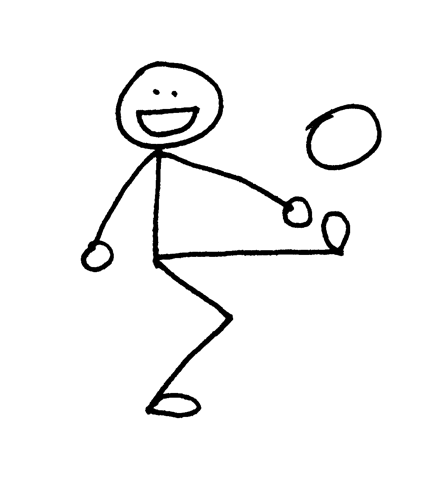原文:Let’s Build A Simple Interpreter. Part 2.
译文:
在《有效思考的5大元素》一书中,作者 Burger 和 Starbird 分享了一个故事,讲述了国际知名的小号演奏家托尼·普洛格如何在大师班中指导学生的经历。学生们首先演奏了复杂的段落,他们表现得非常出色。但当他们被要求演奏非常简单的音符时,这些音符听起来很幼稚。而当托尼演奏同样的音符时,这些音符却显得不再幼稚。托尼解释说,掌握简单音符的演奏有助于在演奏复杂乐曲时更有控制力。这堂课表明,要培养高超的演奏技巧,必须首先专注于基本理念的掌握。
这个道理不仅适用于音乐,也适用于软件开发。它提醒我们,即使有时看似在倒退,也不要忽视对基本概念的深入理解。熟练掌握工具或框架固然重要,但了解其背后的原理同样关键。正如拉尔夫·沃尔多·爱默生所说:
“如果你只学方法,就会被方法束缚。但如果你学的是原理,你可以发明出自己的方法。”
解释器和编译器 接下来,我们将再次深入研究解释器和编译器。
今天,我将展示一个新版的计算器,它将能够:
处理输入字符串中的任意空格字符。
处理输入中的多位数整数。
实现整数的加法和减法。
以下是新版计算器的源代码:
1 2 3 4 5 6 7 8 9 10 11 12 13 14 15 16 17 18 19 20 21 22 23 24 25 26 27 28 29 30 31 32 33 34 35 36 37 38 39 40 41 42 43 44 45 46 47 48 49 50 51 52 53 54 55 56 57 58 59 60 61 62 63 64 65 66 67 68 69 70 71 72 73 74 75 76 77 78 79 80 81 82 83 84 85 86 87 88 89 90 91 92 93 94 95 96 97 98 99 100 101 102 103 104 105 106 107 108 109 110 111 112 113 114 115 116 117 118 119 120 121 122 123 124 125 126 127 128 129 130 131 132 133 134 135 136 137 138 139 140 141 142 143 144 145 146 147 148 149 150 151 INTEGER, PLUS, MINUS, EOF = 'INTEGER' , 'PLUS' , 'MINUS' , 'EOF' class Token (object ): def __init__ (self, type , value ): self.type = type self.value = value def __str__ (self ): """类实例的字符串表示。 例子: Token(INTEGER, 3) Token(PLUS '+') """ return 'Token({type}, {value})' .format ( type =self.type , value=repr (self.value) ) def __repr__ (self ): return self.__str__() class Interpreter (object ): def __init__ (self, text ): self.text = text self.pos = 0 self.current_token = None self.current_char = self.text[self.pos] def error (self ): raise Exception('Error parsing input' ) def advance (self ): """前移'pos'指针,设置'current_char'变量。""" self.pos += 1 if self.pos > len (self.text) - 1 : self.current_char = None else : self.current_char = self.text[self.pos] def skip_whitespace (self ): while self.current_char is not None and self.current_char.isspace(): self.advance() def integer (self ): """返回从输入端处理过来的(多位数)整数。""" result = '' while self.current_char is not None and self.current_char.isdigit(): result += self.current_char self.advance() return int (result) def get_next_token (self ): """词法分析器(也叫做扫描器或者分词器) 此方法负责将句子拆分成一个个标记。一次一个标记。 """ while self.current_char is not None : if self.current_char.isspace(): self.skip_whitespace() continue if self.current_char.isdigit(): return Token(INTEGER, self.integer()) if self.current_char == '+' : self.advance() return Token(PLUS, '+' ) if self.current_char == '-' : self.advance() return Token(MINUS, '-' ) self.error() return Token(EOF, None ) def eat (self, token_type ): if self.current_token.type == token_type: self.current_token = self.get_next_token() else : self.error() def expr (self ): """解析器/解释器 expr -> INTEGER PLUS INTEGER expr -> INTEGER MINUS INTEGER """ self.current_token = self.get_next_token() left = self.current_token self.eat(INTEGER) op = self.current_token if op.type == PLUS: self.eat(PLUS) else : self.eat(MINUS) right = self.current_token self.eat(INTEGER) if op.type == PLUS: result = left.value + right.value else : result = left.value - right.value return result def main (): while True : try : text = raw_input('calc> ' ) except EOFError: break if not text: continue interpreter = Interpreter(text) result = interpreter.expr() print (result) if __name__ == '__main__' : main()
将上述代码保存为 calc2.py 文件,或者直接从GitHub 下载。运行代码,验证其功能是否符合预期:处理输入中的空白字符,接受多位数的整数,并能进行加减法运算。
以下是我在笔记本电脑上运行的示例:
1 2 3 4 5 6 $ python calc2.py calc> 27 + 3 30 calc> 27 - 7 20 calc>
词位、解析和解析器 与第1部分 相比,主要的代码变化有:
重构了 get_next_token 方法,将指针增量逻辑提取到一个独立的方法中。
增加了两个新方法:skip_whitespace 用于忽略空白字符,integer 用于处理多位数整数。
修改了 expr 方法,使其除了识别 INTEGER -> PLUS -> INTEGER 序列外,还能识别 INTEGER -> MINUS -> INTEGER 序列,并能进行相应的加减法运算。
在第1部分 中,你已经学到了标记 和词法解析器 的概念。今天我们将讨论词位 、解析 和解析器 。
你已经了解了什么是标记 。为了更好地理解标记,我们需要介绍词位。什么是词位?词位 是组成标记的一串字符串。下面的图片展示了一些标记和词位的例子,帮助你更好地理解它们之间的关系:
还记得我们的 expr 方法吗?我之前提到过,它用于解释算术表达式。在解释之前,首先需要识别表达式的类型,是加法还是减法。这就是 expr 方法的核心功能:在从 get_next_token 方法获取的标识流中找到结构,然后对识别出的表达式进行解释,计算结果。
在标识流中寻找结构的过程,或者说识别算式的过程,称为解析 。执行这项工作的部分称为解析器 。
现在你知道了 expr 方法在解释器中负责解析 和解释 :首先识别标识流中的INTEGER -> PLUS -> INTEGER或INTEGER -> MINUS -> INTEGER短语,然后对其进行解释,返回结果。
练习 现在是练习时间:
将计算器扩展到能处理两个整数的乘法运算。
将计算器扩展到能处理两个整数的除法运算。
修改代码以处理包含任意数量加减法的表达式,例如 “9 - 5 + 3 + 11”。
检查你的理解
什么是词位?
在标记流中找到结构的过程叫什么?
解释器或编译器中进行解析的部分叫什么?
希望你喜欢今天的课程。在本系列的下一篇文章中,你将扩展计算器以处理更复杂的算术表达式,敬请期待。
推荐书单:
Language Implementation Patterns: Create Your Own Domain-Specific and General Programming Languages (Pragmatic Programmers) Writing Compilers and Interpreters: A Software Engineering Approach Modern Compiler Implementation in Java Modern Compiler Design Compilers: Principles, Techniques, and Tools (2nd Edition)

